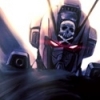An eligible target is anything that meets the enhancement requirements of the enhancement being moved. i.e. If you have an enhancement that says “Enhance a Force User unit†then you can move that enhancement to any Force User unit controlled by the same player.
1. Rookie Pilot has been put into play as an enhancement using Stay On Target. Where, if anywhere, can the Cultist move Rookie Pilot?
Nowhere. The Rookie Pilot does not have any inherent text that allows him to enhance anything. He was put into play by another card effect obeying all the rules of the card that put it into play. As it has no other eligible targets, it cannot be moved to a new unit. Per update, he'd be immediately discarded.
2. Wedge, Luke, or Black Squadron Pilot are in play on a Fighter, having used their gametext to enter play as an enhancement. Where, if anywhere, can the Cultist move them?
To any other Fighter (or Speeder, if Luke/Wedge). Fighters (and Speeders) are eligible options for these cards to enhance because of their game text. As such, the Cultist can move them to those targets.
3. Wedge, Luke, or Black Squadron Pilot have been put into play via Stay On Target onto a vehicle that did not allow them to use their gametext. Where, if anywhere, can the Cultist move them?
Nowhere. Same reasoning as the Rookie Pilot above. Without their game text, Wedge, Luke and Black Squadron Pilot have only the Vehicle that Stay on Target placed them on as an eligible enhancement option. Per update, they cannot stay on a non-Fighter (or Speeder) Vehicle in the first place.
3b. If the Cultist can move them to a Fighter (or Speeder for Luke/Wedge), does their gametext remain blank?
If they somehow *did* get moved (can’t think of any effect right now that would do so, but being hypothetical), they would not get their text, as they entered play in a manner that didn’t grant them their game text, and being moved is not entering play, so you cannot gain the text without leaving play and then entering play again.
4. Jedi Lightsaber is on Luke Skywalker. The recently spoiled IE Tarkin blanks its (Lightsaber) gametext:
- Does it immediately get discarded for not being on an eligible target as it no longer has an eligible target defined?
Yes. A blank enhancement that is attached to another card is immediately discarded if the attachment state is illegal from either direction (i.e. if the enhanced target no longer meets the requirements or the attachment itself loses the appropriate text allowing it to be used as an attachment there).
Basically, to be attached to another card, both the enhancement being used as an attachment and the card being enhanced must meet the requirements.
4b (addendum): Enhancements that are *not* attached to other cards will remain in play if blanked. This is something that I have noted to make sure it’s added to the next FAQ.
*UPDATE WITH FOLLOW UP INFORMATION*
The pilot keyword contains the attachment permission “Enhance a friendly Vehicle unit.†If this keyword is lost (through the blanking of a printed text box by another card effect, it being stolen by some card effect, etc), you lose the permission to be an attachment on that card, and thus are discarded (same as if the Jedi Lightsaber loses the “Enhance a Force User unit†text and is discarded.)
This has the following extra consequences that are minor reversals of the previous rulings.
1. Wedge/Luke/Black Squadron Pilot on non-Fighter (or Speeder) cards.
The texts of these 3 cards means that, while you can do the Stay on Target effect to put them on any friendly Vehicle unit (they meet all the criteria to be targeted and affected by Stay on Target), as soon as they attach to a non-Fighter (or Speeder), they are in an illegal attachment state and are immediately discarded. (They don’t have the necessary “Enhance a {whatever this is} unit†text to remain.)
2. Rookie Pilot
Given that the Rookie Pilot has no legal places to stay as an enhancement by himself, he will be immediately discarded. Again, Stay on Target can place him on a Vehicle unit (he meets all criteria for the effect), but once there, he no longer has any text allowing him to remain, so he is discarded. This effectively means that the Rookie Pilot cannot pilot any ships (which is a reversal of previous understanding that was only brought to light through consideration of the pilot keywords in conjunction with textbox blanking effects).
Stay on Target gives you a set of conditions to fulfill that allow you to do something, but the cards involved must have the necessary text in order to allow the attachment state to continue beyond the point of resolution of Stay on Target. (Stay on Target doesn’t care if the attachment stays there or not, it only gives you the option to try and create an attachment state). In order to remain attached to a card, the appropriate “Enhance a {SOMETHING}†text must exist and the card being enhanced must match the {SOMETHING} criteria.



 Sign In
Sign In Create Account
Create Account



 Back to top
Back to top














